Discount coupon examples to redeem at a physical point of sale
To ensure coupons help your brand and products become more sellable without a perceived devaluation of their price, it is important to ask the customer for something in return. For example, in the following case, the furniture brand Moradillo gave away 20% discount coupons, but did so within specific guidelines:
- A significant reason: celebrating their 50th anniversary. A distinct, special, and time-limited offer.
- A nominal, non-transferable discount. In exchange for their contact details, users received a coupon with a unique code that can only be used once.
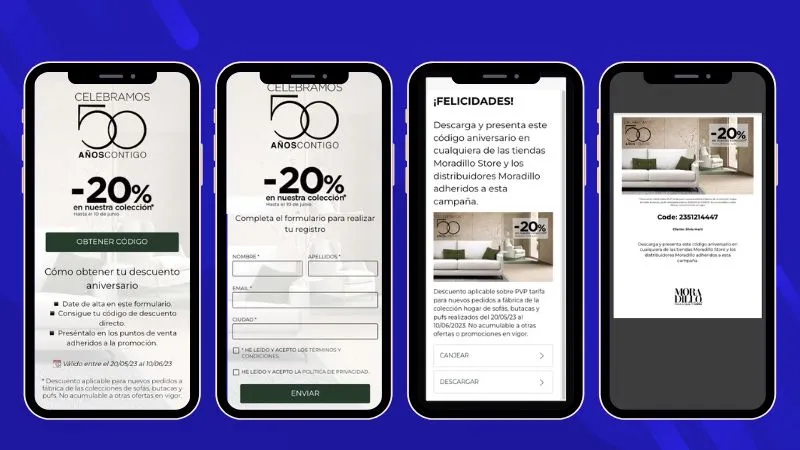
The Easypromos tools make it possible to create personalized coupons and distribute them efficiently and securely. Additionally, you can clearly explain the instructions for redemption and track who uses it, when, and at which establishment.
Here’s another example of coupons distributed using Easypromos. The Montigalá shopping center distributed 2×1 coupons for its stores using the Promo Codes and Coupons app. The brand designed an online coupon that users could download and redeem at the store.
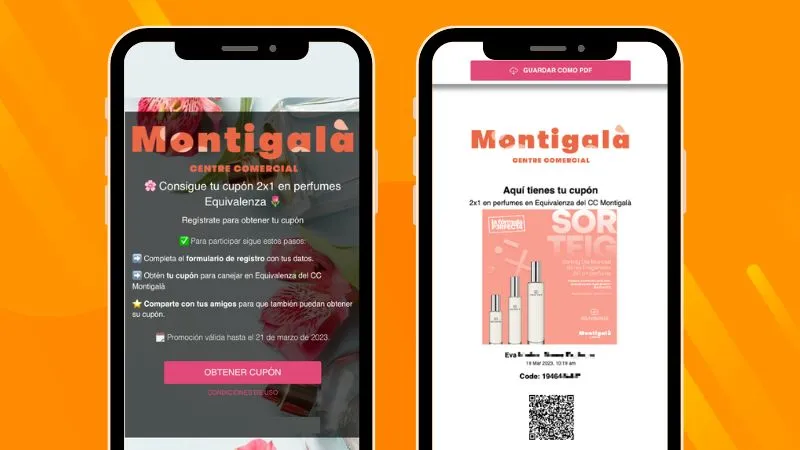
With Easypromos, you can create personalized coupons to make them match your corporate image. In the following example, a water park distributed 20% discount coupons to everyone who registered at the promotion’s microsite. Upon completing the registration, users could download a PDF coupon with a unique barcode and redeem it at the park’s ticket booths when purchasing the entrance ticket.

E-commerce coupon examples
Coupons are also effective to encourage online purchases. In the next example, a toy brand aiming to boost its online sales delivered a fun dynamic to attract followers: a digital puzzle. As users completed the game, they received a discount coupon that could only be redeemed in their online store.
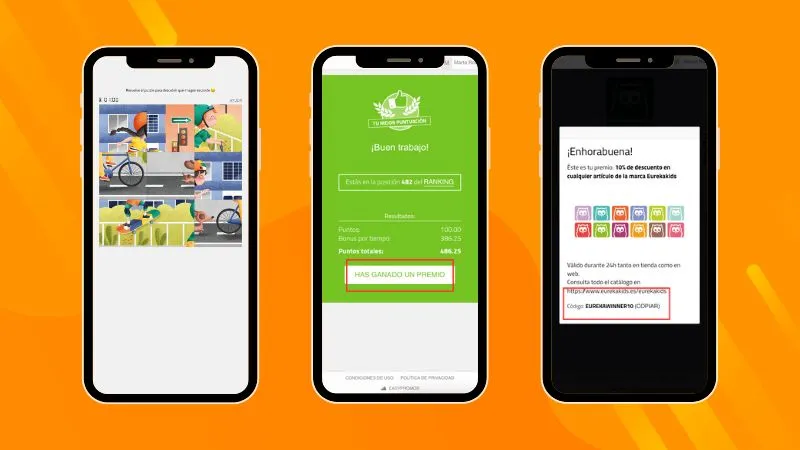
Electronic coupons to redeem at e-commerce are usually of two types:
- A generic alphanumeric coupon, valid for anyone who uses it and restricted only by the expiration date. In this case, the brand does not need to limit its use because it always results in a sale, and has made sure that its profit margin is not affected.
- A unique alphanumeric coupon code for each user. It can only be used once and by a single person.
E-commerce platforms typically have a system for generating promotional codes. In this case, the Easypromos tools can be used to distribute them but are ont involved in validating the coupon within the online store.
Another example of coupons to redeem in an online store is the prize and discount roulette of the brand Ufesa. To direct their social media followers to their e-commerce, they launched an online roulette and shared it on several channels. Users could register on the microsite and spin the roulette for the chance to win prizes. Most were discount coupons to redeem in their online store, consisting of a generic code: SORPRESA10.
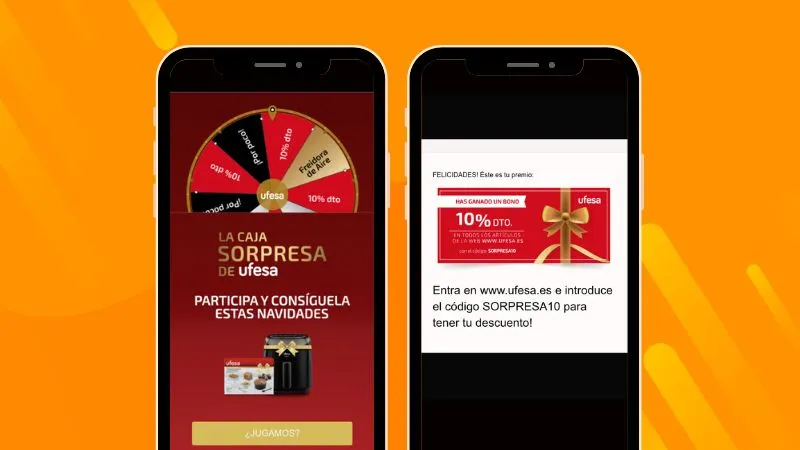
Gamifying the distribution of coupons is a good option to capture your audience’s attention and create a more positive connection. Let’s take a look at several ways of using coupon-based gamification to achieve your marketing goals.
Examples of gamified coupon distribution
A digital prize prize wheel is a kind of interactive promotion that generates a strong response from participants. It is easy and straightforward for the user, and the element of chance is always enticing.
In the following example, a pizzeria launched a ‘prize-no prize’ Halloween prize wheel. If users landed on a prize square, they received a 20% discount to redeem at the physical store.
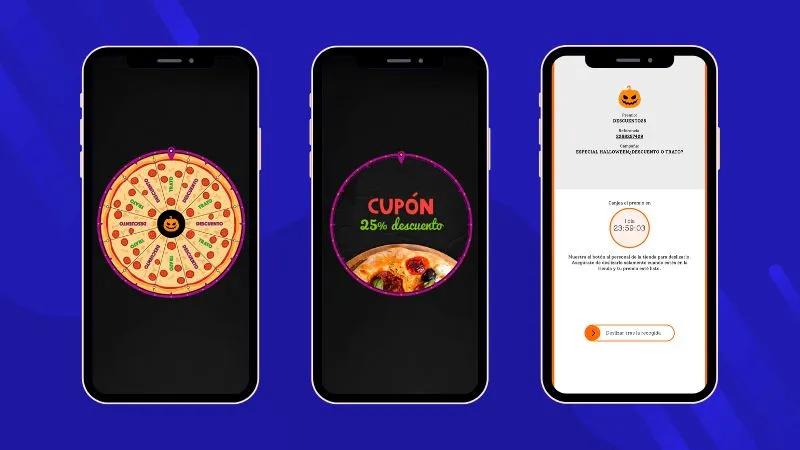
Another popular gamified dynamic used to distribute coupons is a digital scratch-and-win. Traditional promotions of physically scratching a card to find out if you win a prize have moved to the online world, allowing for increased interest and surprise.
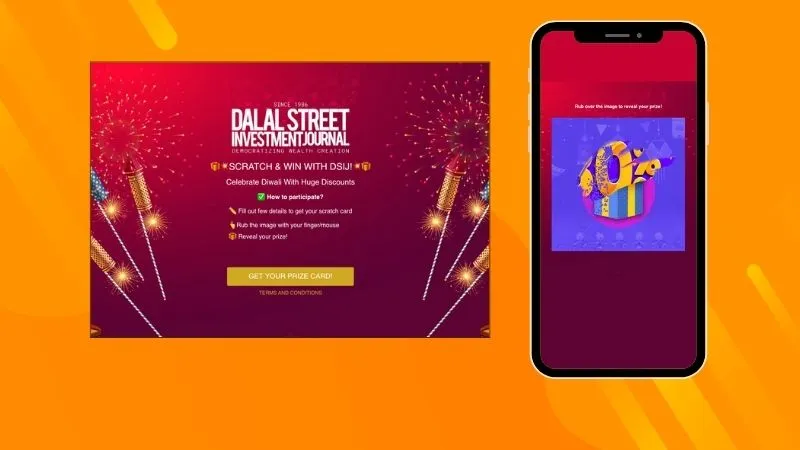
In the example above, an Economics newspaper in India used a scratch-and-win promotion during the Diwali festival to distribute coupons. They presented a banner with a link to the promotion’s microsite, allowing them to identify anonymous website visits and convert them into leads. In return, users got discounts to access paid content.
Coupons provide a double incentive to participate in games that brands share with their audience to generate engagement and brand awareness. In the following example, an electronics store chain introduced the new Samsung phones to its customers with a puzzle. Those who completed the game earned prizes and advantages in the store, as shown in the following example, consisting of a 10% discount coupon for repair services.
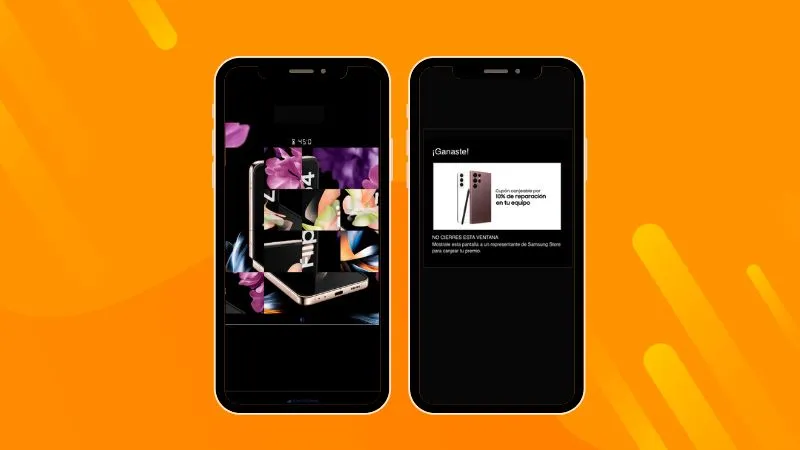
Other examples of coupon distribution dynamics
There are many options to distribute valuable coupons among your target audience. The digital world allows you to organize interactive promotions like this summer photo contest. The air freshener and cosmetics brand, The Fruit Company launched a photo contest and rewarded all participants with a discount coupon for their online store.

Last but not least, here’s an advanced example of how to use coupons to increase purchases: the Digital Coupon Book. If you wish to promote a shopping center, a business association, or a tourist area, you need a tool to deliver discounts and advantages attractively, consistently, and collectively. This way, you can increase customer attraction with a comprehensive offer.
